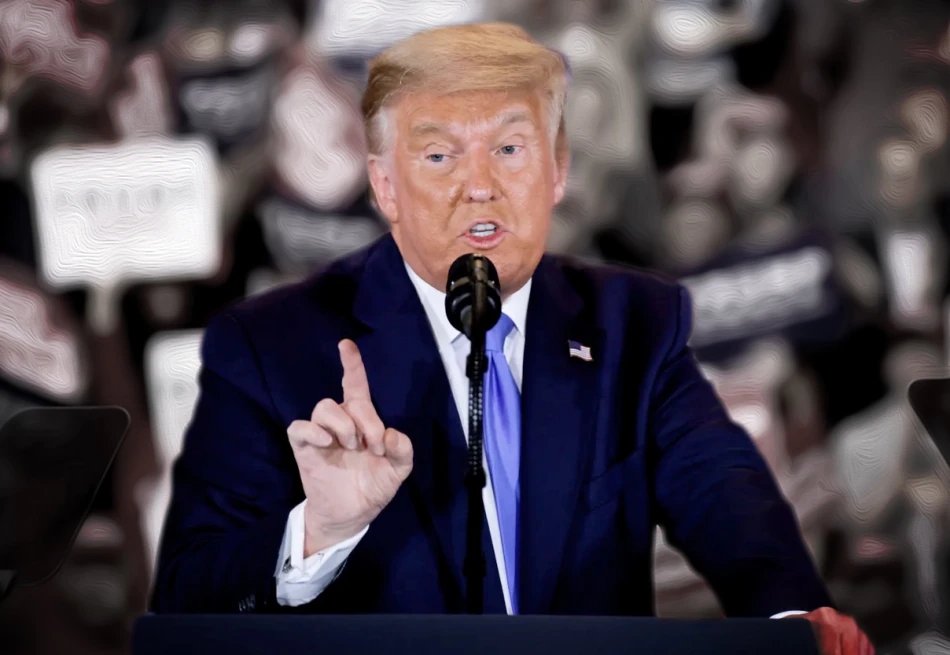
Trump Refuses to Extend Tariff Deadline: Impending Trade Tensions Loom
Trump's Trade War Escalates as August Deadline Looms, Despite Strong US Economic Data
President Donald Trump has declared his August 1st deadline for imposing retaliatory tariffs on remaining trade partners as non-negotiable, even as robust US economic growth and job creation provide him with additional leverage in ongoing negotiations. With India potentially facing tariffs of up to 25%, Trump's hardline stance signals a new phase in his trade strategy that could reshape global commerce patterns.
No Extensions: Trump Doubles Down on Trade Pressure
Writing on his social media platform, Trump emphasized the finality of his position: "The August 1st deadline is the August 1st deadline... It's fixed and will not be extended... It's a great day for America." This uncompromising tone marks a significant escalation from his previous approach, where he had partially frozen tariffs at 10% in April to allow room for negotiations.
The threat specifically targets India with potential tariffs ranging from 20% to 25%, though Trump indicated that final decisions remain fluid as negotiations continue. This represents a substantial increase from the current suspended rates and could dramatically impact bilateral trade flows between the world's largest economies.
Economic Strength Fuels Negotiating Position
Trump's confidence appears bolstered by surprisingly strong US economic performance. The American economy expanded by 3% in the second quarter on a quarterly basis, significantly exceeding the anticipated 2.6% growth rate. This robust performance provides political cover for aggressive trade policies that might otherwise face domestic resistance.
Labor Market Defies Slowdown Fears
Perhaps more importantly for Trump's political calculus, US private sector job creation surged well beyond expectations in July. According to the monthly ADP report, private employers added 104,000 jobs, substantially higher than the forecasted 64,000 and a dramatic reversal from June's revised loss of approximately 23,000 positions.
The job gains were led by entertainment and hospitality sectors, which added 46,000 positions, and financial activities with 28,000 new roles. However, education and health services shed 38,000 jobs, indicating uneven recovery patterns across the economy. Wages rose 4.4% year-over-year, suggesting continued inflationary pressures that could influence Federal Reserve policy.
Strategic Implications for Global Trade
Trump's hardline approach contrasts sharply with the trade liberalization strategies pursued by countries like Singapore and the UAE, which have positioned themselves as global commerce hubs through reduced barriers and streamlined regulations. His strategy appears designed to force bilateral negotiations rather than multilateral trade agreements, potentially fragmenting global supply chains.
Limited Success Despite Aggressive Tactics
Despite launching multiple rounds of tariff threats since April, Trump has secured only a limited number of trade agreements. This mixed track record raises questions about the effectiveness of tariff-based negotiation strategies, particularly when applied to major economies like India that have significant domestic markets and alternative trading partners.
The timing of this escalation, coming alongside strong economic data, suggests Trump views current conditions as optimal for applying maximum pressure. However, the approach carries risks of retaliatory measures that could impact American exporters and potentially undermine the very economic strength that currently supports his negotiating position.
For global markets, the August 1st deadline represents a critical inflection point that could either produce breakthrough agreements or trigger a new wave of trade tensions affecting international supply chains and investment flows.
 Sara Khaled
Sara Khaled







